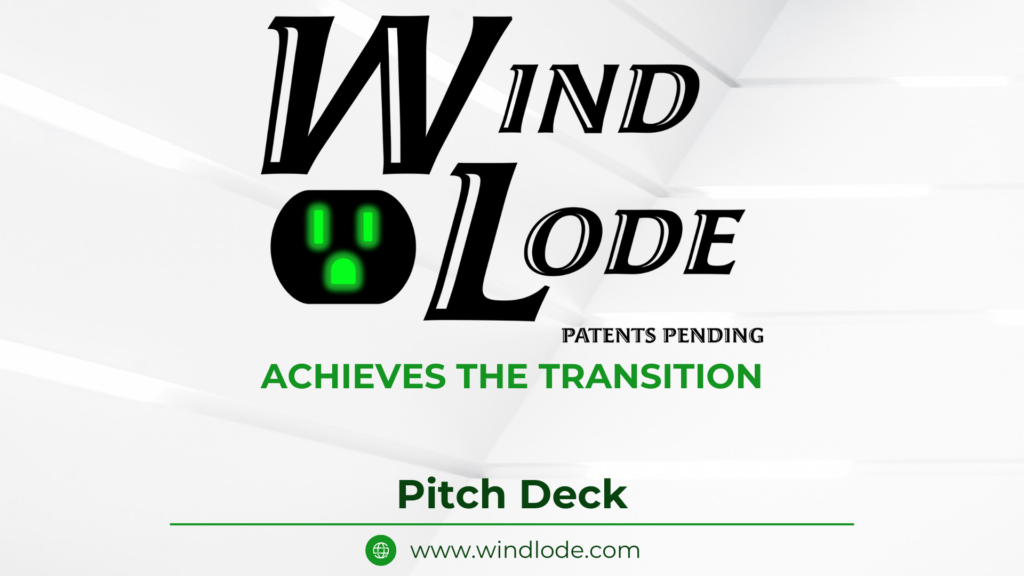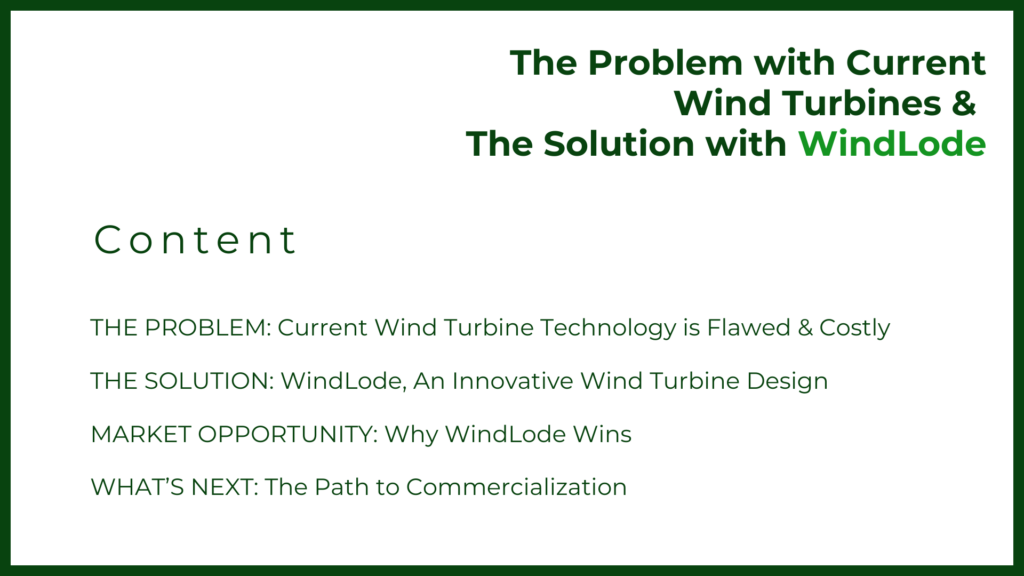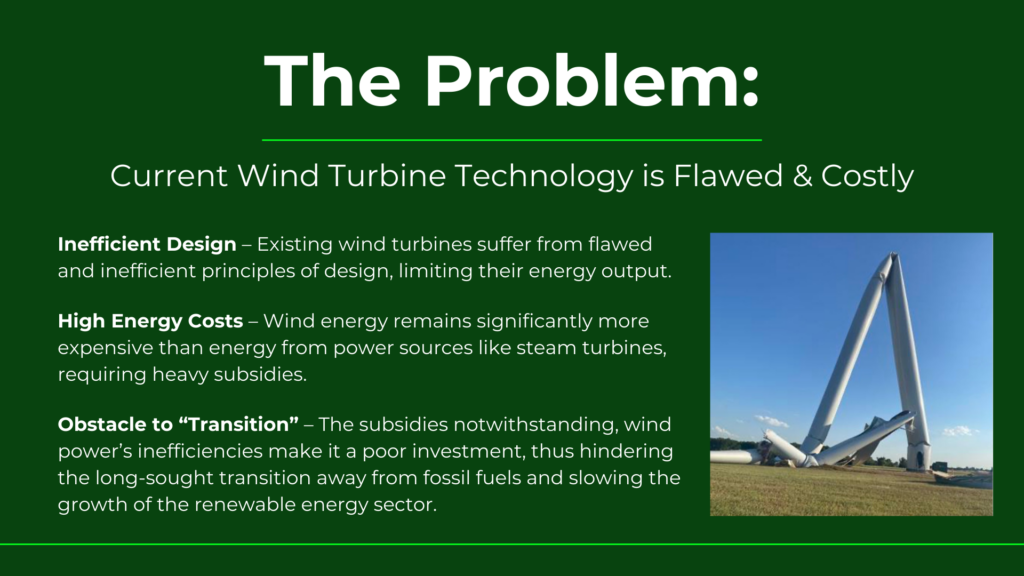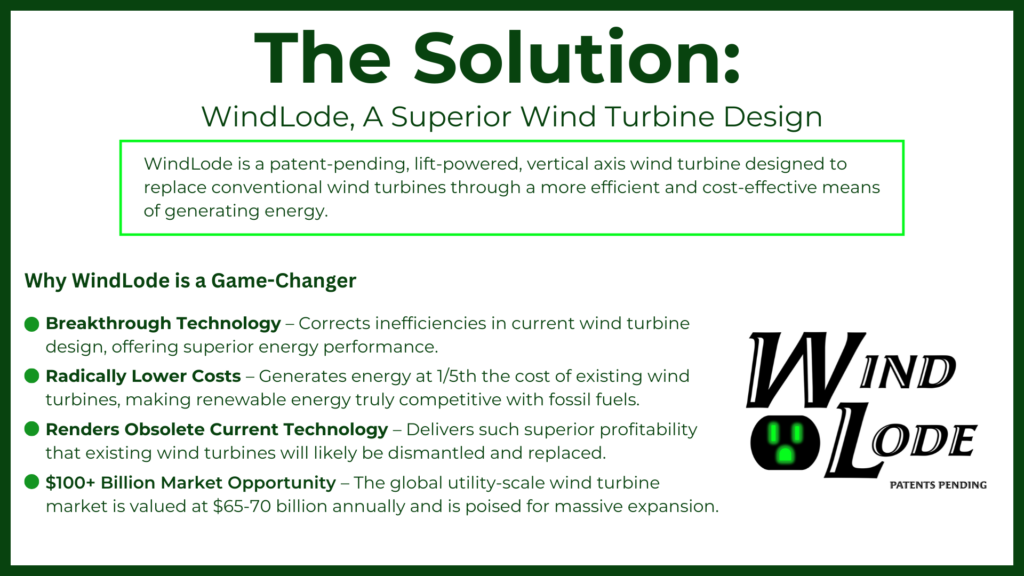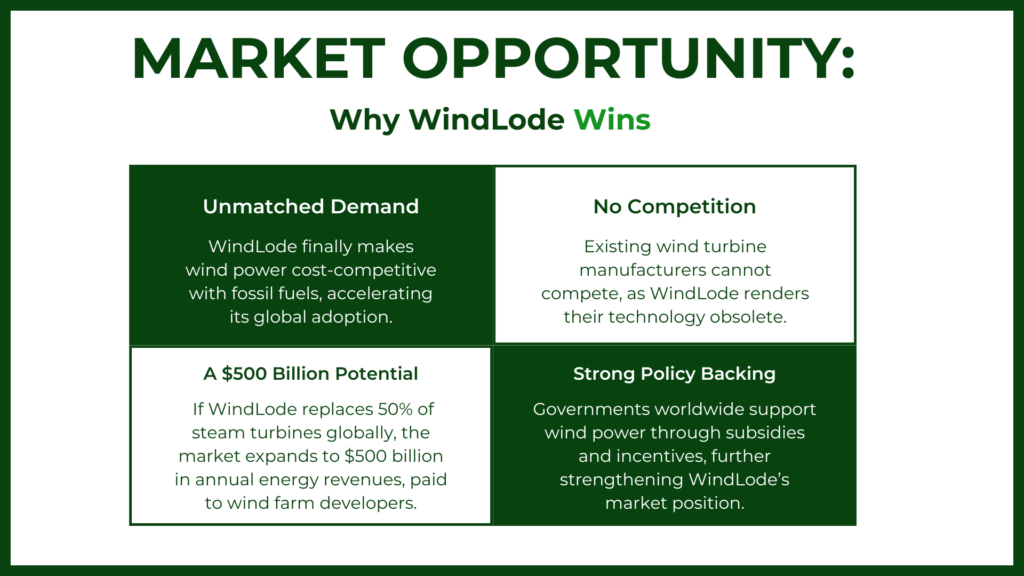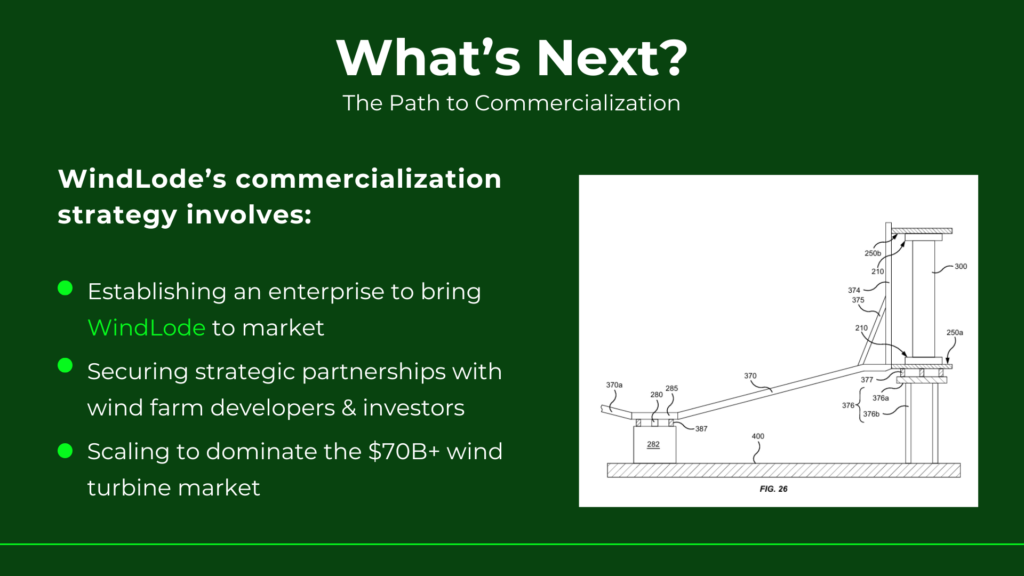The problem concerns the economics of wind power, particularly as electricity generated for commercial distribution. The past thirty years have seen little improvement in wind turbine efficiency, and, in this regard, wind turbine design seems to have reached technological stagnation. This circumstance has particular consequences for commercial wind power projects. For example, other, more efficient sources of power maintain an economical advantage over wind power which, therefore, must be provided public subsidies and incentives – or else, no investment in wind power projects. This, of course, means no wind power. Although wind power enthusiasts are reluctant to admit it, the Renewable Energy movement is hampered by the enduring stagnation of wind turbine technology.
The solution lies in a more efficient wind turbine design, one that converts wind into useful power with better economy. WindLode is a wind turbine of the vertical axis category, of original design and incorporating breakthrough technology, patents pending. WindLode achieves extraordinary power and unprecedented efficiency and holds the prospect of becoming the world’s predominant source of power. WindLode offers surpassing power, generated from wind, at costs on par with other, more economical, sources of power. As shown, WindLode achieves power at levels far surpassing the most powerful wind turbines currently offered (such as the Vestas V236, for example).
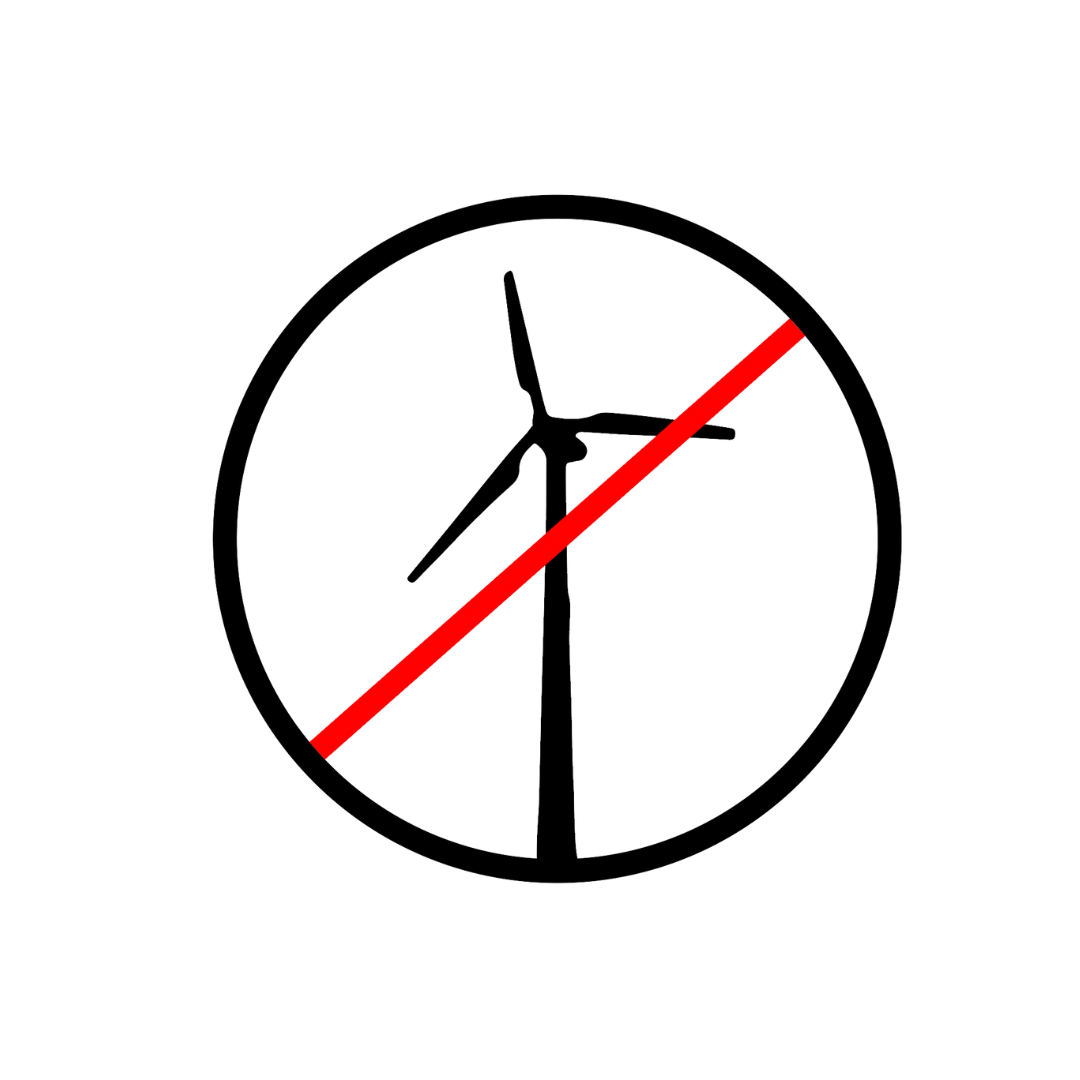
WindLode overcomes, with advantage, the troublesome aerodynamics of vertical axis category wind turbines. WindLode’s extraordinary power is achieved through inventive features providing surpassing power and unprecedented efficiency, as demonstrated herein. A scaling/rating exercise shows a multi-megaWatt rating for WindLode exceeding twice that of the most powerful wind turbine currently available, the Vestas V236.
WindLode generates power in the usual way, rotating under the impetus of lift generated at airfoil blades. Otherwise, WindLode departs from the usual, with aspects either inventive or unconventional. The turbine itself appears as unconventional, being an annular framework rotatively supported underneath and much dissimilar to the Darrieus turbine, the norm of VAWT design.* Thus, WindLode presents to the eye a cylindrical assembly of vertical blades, not exceeding sixty feet in height.
*Note: The Darrieus approach of supporting the turbine centrally has been the design basis for all large VAWT prototypes. For an informative discussion of VAWT prototypes, see “A historical review of vertical axis wind turbines rated 100 kW and above”, Mollerstrom et al. There is some confusion concerning VAWT nomenclature. The eggbeater (aka troposkein) VAWT configuration and the straight bladed H-type Vawt, both, are included under the original Darrieus patent. A lift-powered, vertical-blade wind turbine that is supported centrally is, in principle, a Darrieus turbine.
WindLode’s inventive technology was achieved in an effort of several years duration, through research and design conducted by the WindLode team. The specification comprises some seventy pages. The Background of the Invention is presented here in an edited version. A brief description of WindLode technology:
